How to Fix Your Unhealthy Relationship with Food
- June 14, 2023
- Last Updated: April 22, 2025
- 23 Comments
- Intuitive Eating
Do you have an unhealthy relationship with food? Whether it be from a history of dieting, an eating disorder or something else, understand the signs of an unhealthy relationship to food and how to make peace with food.
As an Amazon Associate, I may earn from qualifying purchases. You can read more here about our Disclaimer and Privacy Page.
Many people probably have an unhealthy relationship with food without even knowing it.
By that I mean, they think it’s normal to count calories, not eat at certain times, and ignore hunger.
This couldn’t be further from the truth and is the complete opposite of normal eating, but this is what our culture normalizes.
For background information, intuitive eating is the key to food flexibility and ultimately, making peace with food.

Intuitive eating is an evidenced-back way of viewing eating that centers around pleasure and introspection.
It is centered around 10 principles, which teach you how to get back to your innate cues and pleasure around food. It’s about avoiding the dangers of clean eating.
You don’t have to settle with having an unhealthy food relationship.
This post breaks down each of the 10 principles of intuitive eating in more detail.
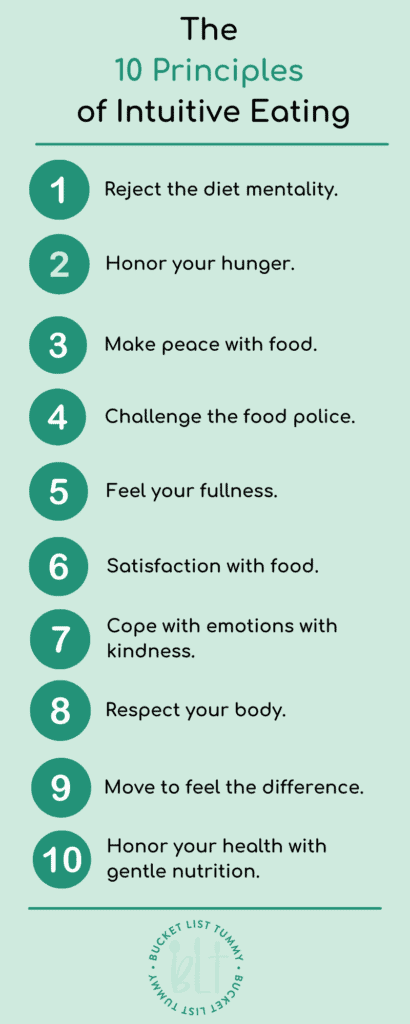
Having a background knowledge of what intuitive eating is can be really helpful in developing autonomy around food.
Signs of An Unhealthy Relationship With Food
Here are some signs that you may have an unhealthy relationship with food.
- Look at menus ahead of time to order what you want
- Ignore hunger and will only eat at certain times
- Ignore fullness cues and eat past fullness consistently
- Find yourself eating more, overeating, or bingeing on foods you typically don’t allow
- Follow “good and bad” foods mentality
- Allow yourself “cheat days”
- You can’t stop compulsive exercise to habits, which you engage in to undo what you ate
- You think about food more than you want to
- The idea of certain foods or gaining weight stresses you out
These are just some of many symptoms of having a bad relationship with food.
It IS possible to not be stressed about or thinking about food all the time.

How to Fix an Unhealthy Relationship with Food
Fixing your unhealthy relationship with food won’t happen overnight.
As mentioned, awareness is the first step. Awareness that this is not normal, and the toxic diet culture around you has been feeding you lies.
A bad relationship with food usually has multi-factorial components to it.
Maybe part of it is genetics, putting you at a higher risk of an eating disorder or disordered eating.
Maybe you also have OCD, Type A tendencies, which make you want to control everything, including what you eat.

Maybe your parents dieted when you were younger, and you think it’s the norm.
Maybe you have body dysmorphia, and need some help with ways to improve body image.
There are SO many reasons, so working with a therapist AND dietitian is the best way to attune to these components.
If you’re thinking, I get it, but “I have an unhealthy relationship with food,” and I don’t know where to begin, try these tips.
1. Order What You Actually Want To Eat
Diet culture impacts us in more ways than we think.
Subconsciously, we may be basing food choices off of what others say, or what we perceive to be “best” for us.
But, is it really best? Food is more than fuel. I promise.
How freeing would it feel to give yourself unconditional permission to eat exactly what you wanted?

Ask yourself, what do I want to eat, instead of focusing on what you think you should have?
Maybe it’s pancakes every morning, ice cream for dinner 3 days straight, or pizza for every meal.
Give it a try!
You’ll find that the more common that food becomes, the less anxiety and fear it will provoke. The less exciting it will become.
This is actually a very important step in making peace with food and overcoming that love-hate relationship with food I see so often with my 1-1 clients.
We call this sensory satiety, or more commonly, habituation with food.
The more exposure to a food you have, the more “boring” it becomes and the less desire you have for it.

But you can’t have those experiences through knowledge, it’s something you need to learn through experience, bite by bite.
We have less urges to overeat when we eat what we really want. OUR BODIES ARE SMART!
We can’t trick them because they’ll catch up sooner or later, which is what I see happening and why most fad diets fail!
2. Learn Your Hunger Cues
Learning to honor your hunger is one of the best things you can do to build body trust and make ultimate peace with food.
Similarly, try eating when you’re hungry, even if it’s not your normal “meal time.” This hunger ebook is a great resource to help relearn how to acknowledge your hunger.
When we don’t eat enough or we ignore our primal hunger (our biological, urgent need for food), our bodies compensate with both biological and psychological mechanisms.
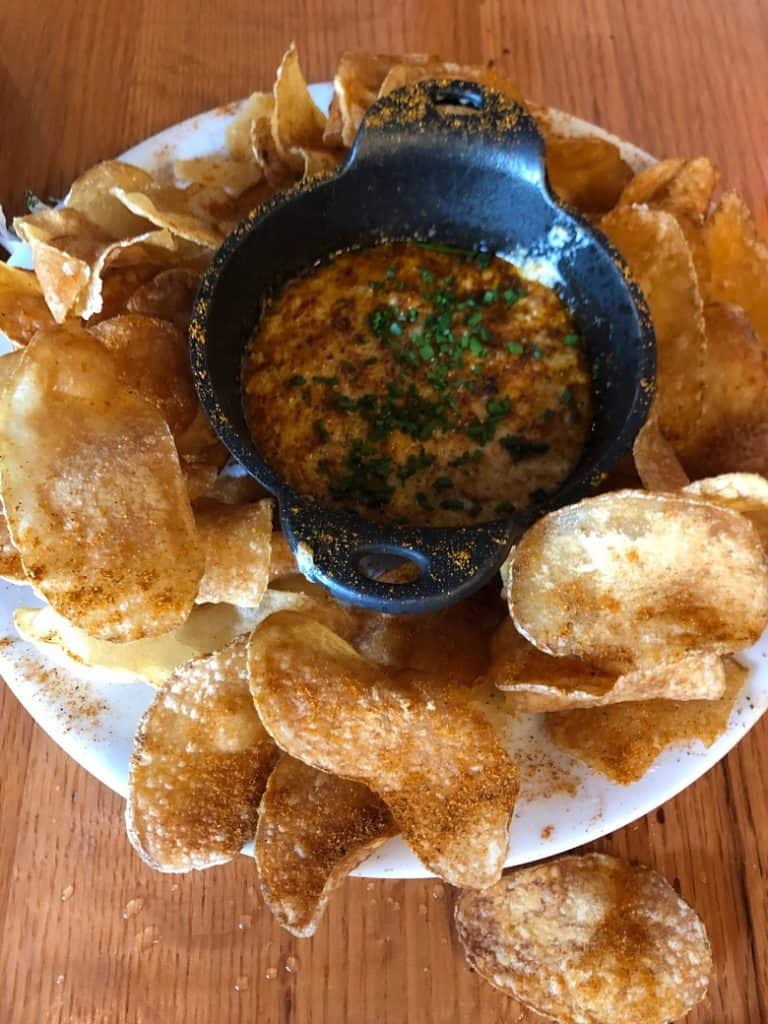
For example, NPY is a brain chemical that makes us crave carbohydrates.
Have you ever been super hungry (a 0, 1 or 2 on the hunger scale, as my clients know it), and just craving something carbohydrate-based? Maybe something like bread, pasta, pizza, dessert?!
There’s a scientific and biological reason for that – your body is doing what it’s supposed to do. You are not in the wrong.
Therefore, you can overcome this unhealthy relationship with food.
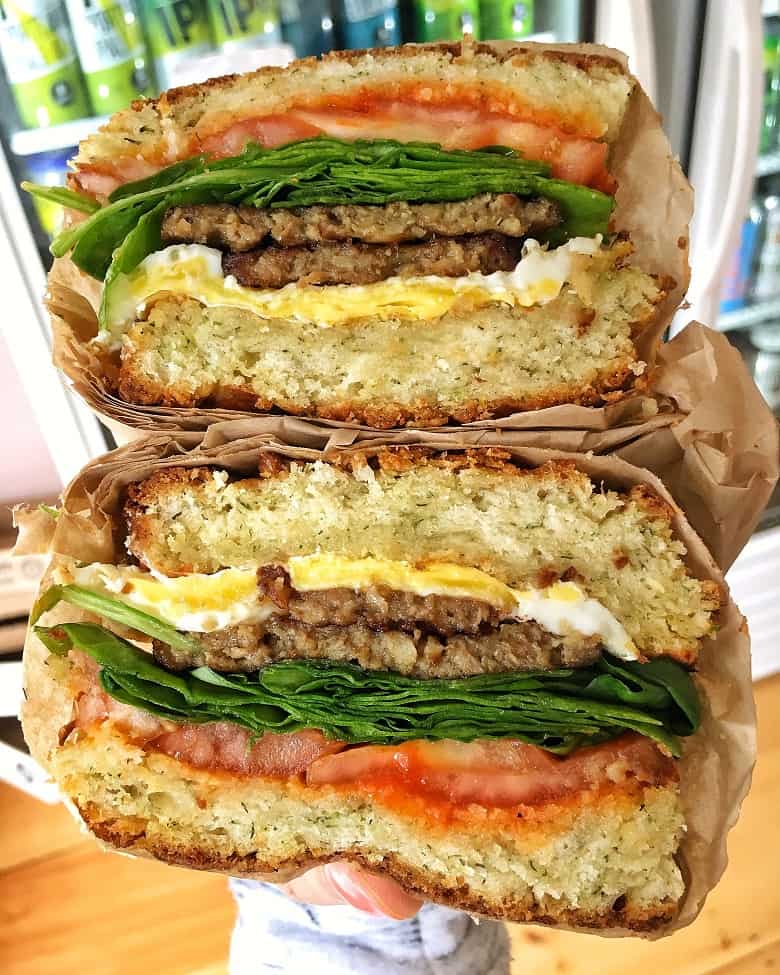
When you eat carbohydrates, you increase your production of serotonin, which then turns off NPY.
Lots of science but basically….your body has these mechanisms to protect you!
Challenge your fear of hunger – it’s actually a good thing!
Acknowledge it, so you don’t get overly hungry, which often leads to bingeing.
3. Learn Where Diet Culture is Hiding
As discussed earlier, diet culture could refer to certain people, magazines, websites, blogs or tv programs promoting diets and bikini bodies.
Even if you don’t realize it, these are likely impacting you subconsciously.
Diet culture won’t help you learn to eat intuitively. To some extent, you have some control over what influences you, so try to gravitate toward the more positive things.
Or, remove yourself from the negative influences.

Diet culture won’t help you overcome a bad relationship with food.
In fact, diet culture thoughts will put more emphasis on other behaviors which could be contributing to your unhealthy relationship with food in the first place.
4. Learn What Normal Eating Is
I love thinking about how normal food is and should be in our lives.
Normal eating and how to eat food like a normal person shouldn’t seem foreign.
Here are some examples of normal eating:
- Looking forward to a meal out, yet also looking forward to a meal in.
- Making your favorite meal often because it’s not something special that you have to “deserve” in order to eat.
- Eating dessert even on days you didn’t exercise just because you enjoy it and want something sweet after dinner.
- Including vegetables at every meal or a few times a day OR not including vegetables at every meal
- Buying foods that you enjoy and are part of your cultural preference
- Eating until you reach a satisfying fullness AND in some instances, recognizing you underate or overate
- Watching kids eat – kids are intuitive eaters naturally, and are able to listen to their bodies!
Normal eating means taking the judgment and shame away from food.
Instead, learn to look at food with curiosity.

5. Aim For Fullness AND Satisfaction
To be both pleasantly full and satisfied, a meal should include foods you enjoy.
That’s one of the key principles of reaching meal satisfaction, not just temporary fullness.
For example, eating a salad when you want a steak just isn’t satisfying.
If you are truly choosing a satisfying food, you’ll probably eat less of it.
To learn how to feel satisfied after eating, think about what sort of pleasure do you look for in foods?
- Taste
- Aroma
- Appearance
- Smell
- Texture
- Volume
All of these ways to taste and describe food come into play when choosing a satisfying food.
You won’t find yourself chasing that “ultimate pleasure” if you actually choose what your body wants in the first place.
Therefore, when you think about how to feel satisfied after eating, you usually need to take into account the food setting, the food you’re eating (do you enjoy it? Is it what you wanted?), and how much you ate.
Of course, you won’t feel satisfied if you don’t eat enough – it’s one of the effects of undereating.

This is exactly what I discuss in my Hunger Ebook – learning to identify what traits you want in a food, and learning to tune in to your hunger, fullness and satisfaction levels.
With several journaling prompts and fill-in-the-blank exercises, it really teaches you how to get in tune with your body to overcome any unhealthy relationship with food.
Here’s an example of one of the exercises.
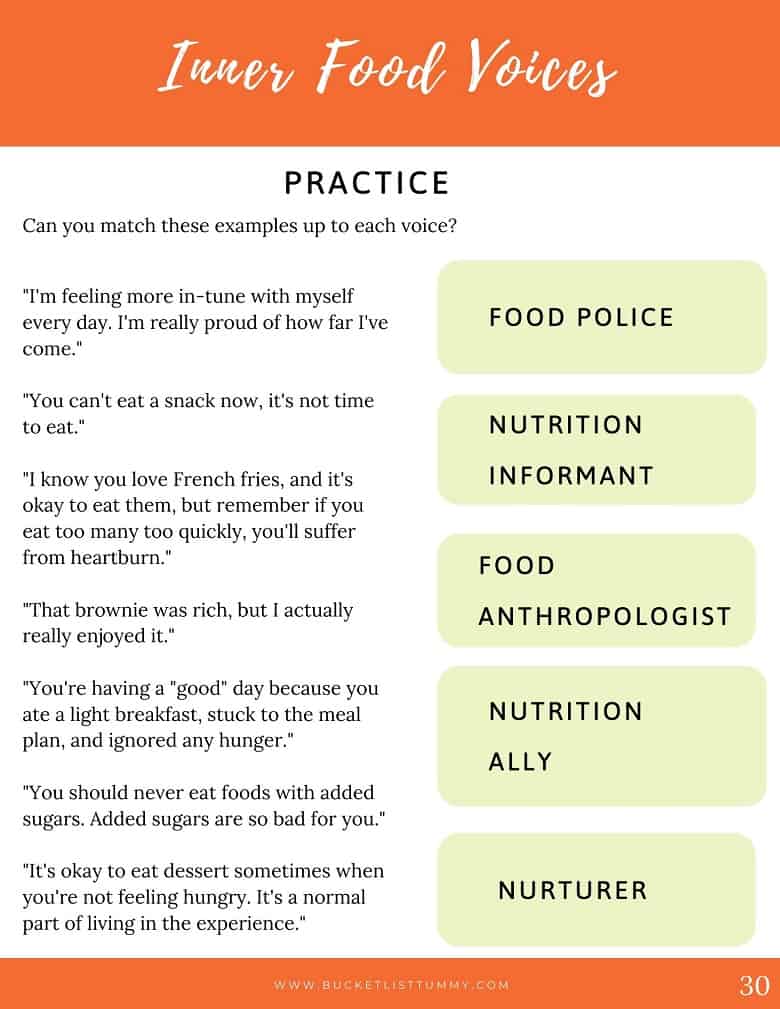
Here’s another example of ordering what you actually want in the moment.
Maybe you want something warm and creamy, but your brain tells you you had a big lunch and you should settle for a salad.
You won’t leave feeling satisfied. You might be full, temporarily, but your body knows its not satisfied.
So, you’ll seek something else out.
I’m not telling you not to eat salads or vegetables, because sometimes that may be what brings you satisfaction. You’ll find that there are times when you crave all the veggies so embrace those times too.
Explore More Recipes
Intuitive EatingSupport Bucket List Tummy

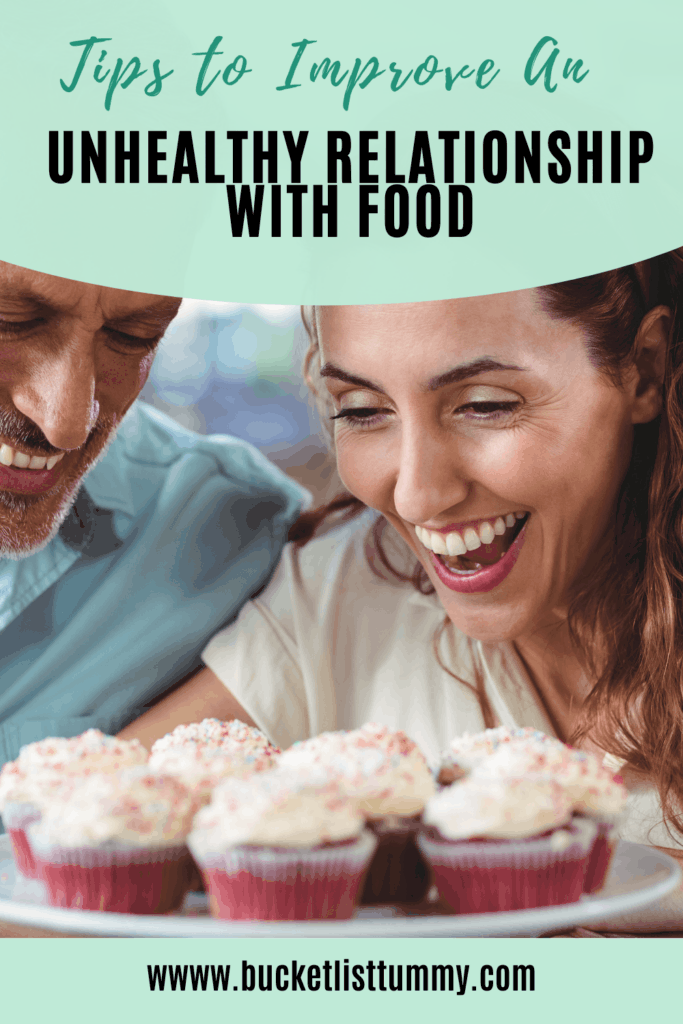






Like This Content?
Support Bucket List TummyI agree with all of this! Thanks for sharing! And all of your food pics are making me hungry 🙂
This is great! I’m a huge proponent of eating the foods you enjoy. Thanks for sharing!
I love this post! Having a healthier relationship with food is something we can ALL work on. Such great insight and tips!
Such good information. I think even if we think we know how to do this, it can take practice and I love having reminders like this.
These are great tips! One of the ones that has been most effective for me is ordering what I WANT to eat. The second I feel like I’m ordering what I’m ‘supposed’ to eat, I’m setting myself up for failure. Life is about balance, and once I’ve had my indulgence, I’m even more excited about getting back on track!
for me getting myself away from diet culture is unfollowing certain people on social media and being mindful of what blogs I read. I think that’s huge!
It makes SUCH a big difference 🙂
I love the idea of looking for meal satisfaction, so you aren’t craving something after a meal (even if you’re technically full.) Also honoring my hunger has been so good especially so I don’t get really hungry and then overeat. I love all of these tips of ordering what you want and making meals that you like to make. They’re also simple, and yet it can be hard to remember them if you’re focused on diet culture.
Thanks, Emily. It can be overwhelming to think about so many rules – I really encourage my clients to simplify it best they can. Order what you want in that moment – don’t second guess it!
THANK YOU, again, for being such a balanced, non-triggering resource for getting away from harmful restriction and for honoring wellness.
Thank you for reading, Liz 🙂
I love the GET YOURSELF AWAY FROM DIET CULTURE part! This is so true! Balance is tough and it cannot happened in that culture.
YES YES YES
For me the thing that has been most helpful is to have whatever I want but only to the point of non-hunger. What amount makes me not hungry anymore? I alsolove the point about a food becoming less desirable the more you have of it. We’ve created so many food rules we forget the basics: eat when hungry!
yasssss, there’s way too much information out there. We need to keep it simple!
Since discovering Intuitive Eating, I have found myself paying more and more attention to choosing foods that are actually satisfying to me. Taking that pause before eating just a brief moments and really concentrating on what would be a good “match” for what my body is asking for has become so essential. Sometimes, I will visualize what the foods will taste and feel like in my body before deciding what I’m going to eat. I think if we all just took 5 minutes to ponder what it is our body is asking for it would be so helpful!
The 5 minute suggestion is a great one. I think we can all do better with that!
Thanks for being a constant reminder of health and happiness, sarah. I’ve been really playing around with the notion of satisfaction vs fullness recently and have become a lot more aware of the things I eat and how they feel. Like you touched on, I’ve noticed that if I choose the thing that is truly more “satisfying,” I actually eat it a lot more slowly and am actually able to stop when I’ve had enough. Vs if I choose the salad just because my brain says thats what I should have, I eat it quickly and even at the end when my stomach is “full” I am always left with a brain hunger that is looking for me. I’ve learned that I really hate that feeling, because physically it can lead to feeling over full but mentally you are anxious because you don’t know if you should have more or not. Blegh. I’d rather have the more solid, satisfying item and have less of it and feel satisfied at the end.
I think those feelings are important to have so we can learn from them. I love your last line, “i’d rather have the more solid, satisfying item and have less of it and feel satisfied at the end.” Amen!
Great tips. I find when I am overthinking what to eat, I’m often just bored. So I try to find something to take my mind off my lunch. Or I’ll just ask my coworker to make me something, anything they want, and that’s what I’ll eat. I’ve eaten some great things, and some…interesting things haha
I also don’t need every meal to be “oh my God the best thing ever!!!” Which is a trap I see a lot of HLbs and IGers doing. It’s like if their sandwich isn’t the pinnacle of everything it’s not good. That is so far from true! As long as the food tastes good and satisfies you, it should be good enough.
I totally agree with you on that – some meals can just me food to get you through the moment. Nothing more, nothing less. And they don’t have to be super beautiful.